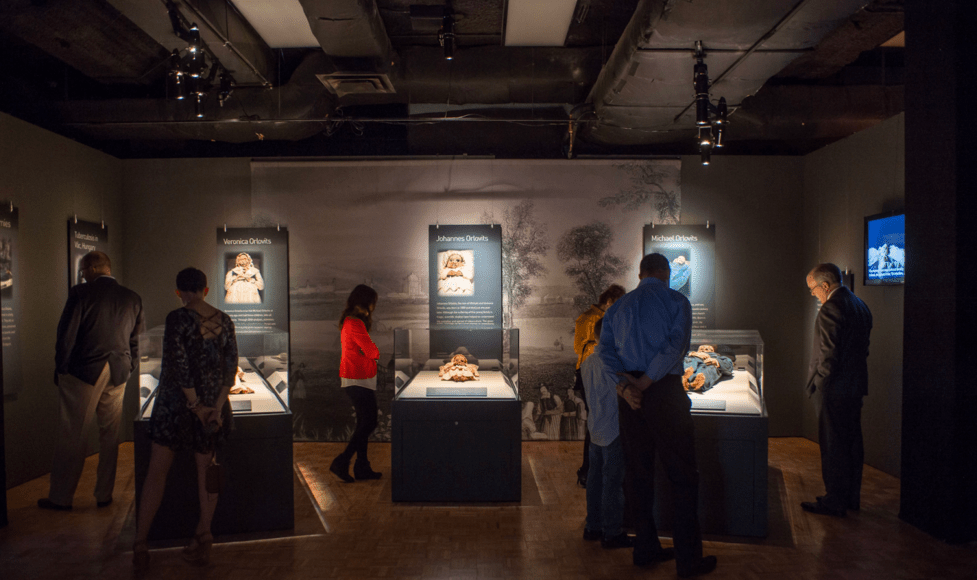Visitors to downtown Miami’s Frost Museum’s newest exhibition, “Mummies of the World,” should prepare to encounter real shrunken heads as well as a mummified cat, falcon, snow rabbit, lizard and a fish.
“We like to say, ‘Inside every mummy is a story waiting to be told,'” said Dr. Cassie Freund, director of science communication at Frost Science. “The exhibit showcases thousands of years of captivating narratives.”
After spending a large part of last year in Connecticut, the traveling exhibit arrived in Miami and opened its doors on May 27. It was produced by NEON and World Heritage Exhibitions, global leaders in creating immersive experiences and exhibitions nationwide.
The exhibition includes the remains of 40 humans and animals from as long ago as 4,500 years and as recent as 29 years ago from Africa, South America and Europe.
Although the mummies are of interest, the exhibition is meant to highlight the advancement of technology and, with it, the life story of ancient men, women and children. They’re able to do this by studying the remains using DNA analysis and radiocarbon dating, which uncovers illnesses and anything eye-catching in dead bodies.
The first thing visitors saw in the darkness of the room were the mummified bodies of an unnamed German baron and baroness of the Von Holz family. Both of them, according to Freund, were naturally preserved alongside three other mummies in their burial site at Sommersdorf Castle. Interestingly, studies found that the leather boots Baron Von Holz sported at the time of his death were unworn.
Visitors also get a chance to take a look at many Egyptian coffins, a page of an ancient book on mummification, and the Burns collection, which includes a preserved heart and a portion of an upper body. Further into the exhibit, attendees can see shrunken trophy heads. They provide a glimpse of ancient tribal customs of South America.
The exhibition also showcased the mummy of the University of Maryland at Baltimore, also known as MUMAB. It is the first modern mummification done by scientists. Around 1984, a man only identified as Mr. M planned to donate his body to science. 10 years later, when he died, his body was mummified according to ancient Egyptian practices. Twenty years later, his mummified body shows no sign of decay.
The Orlovits family, consisting of mother and father Veronica and Michael and their young boy Johannes, are the last mummies to be displayed. They were discovered in a church crypt in 1994. According to Freund, Johannes, the youngest member of the family, died in 1801, living only one year old.
Researchers were able to find background information on the family, especially of Veronica and found out she previously had two other children besides Johannes who also died young. They also found out that they died of tuberculosis, a lung disease that was once a leading cause of death in the world.
Nevertheless, Freund believes the exhibit will leave a lasting impression on its viewers.
“People come away reflecting on their own lives and contemplating what awaits them a century from now when they are no longer here,” said Freund. “It may not be the happiest thought, but it is significant.”
The exhibit will be open from May 27 to September 4, 2023.


































